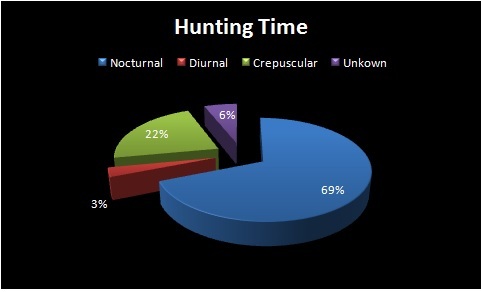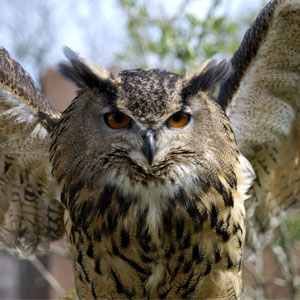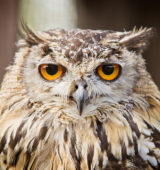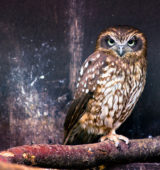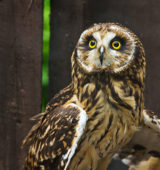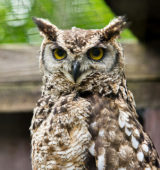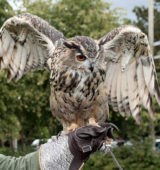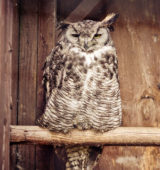What are Owls?
Classification
There about 222 to 268 species of owl in the world, depending on who’s study you read. Owls are classed as mainly nocturnal (active at night) birds belonging to the order Strigiformes, a group that is most closely related to nightjars (Caprimulgiformes). The order is divided into two families: Tytonidae or Barn Owls and related species, of which there are up to 18 species known, and Strigidae, to which the remaining 194+ Owl species belong.
A quick pointer on when an owl comes out to hunt can be the colour of its eyes, it is not true to all species of owl but can be used as a general guide.
It is thought 69% of owls are Nocturnal, 3% are Diurnal, 22% Crepuscular the remaining 6% is not known as yet.
| Dark Eyes = Night (Nocturnal). | Orange Eyes = Dawn & Dusk (Crepuscular). | Yellow Eyes = Day (Diurnal). |
Click here for a list of the Owls of the World
Appearance
A large, round head and large, forward-facing eyes are a feature that make Owls instantly recognisable. They also have a downward-facing beak (or bill), and soft, cryptically coloured plumage. Males and Females are generally similar in appearance, although the female is often up to 25% larger.
Adaptations
Owls are Raptors, or Birds of Prey, which means they hunt other living things for their food, using their special adaptations and unique abilities that set them apart from any other creature.
Exceptional vision, and acute hearing play a major part in an Owl’s hunting technique. Couple these with powerful talons and beak, plus the ability to fly silently, and you have a formidable predator, using stealth to hunt down prey.
After Eating, Owls regurgitate pellets, which contain the indigestible bones, fur and feathers of their victims. These pellets can be collected by researchers to study Owls’ eating habits.
Distribution
Owls are found on all continents except Antarctica, and in a great variety of habitats, from thick forests to open prairies.
Size
They range in size from the tiny “Least Pygmy Owl” (Glaucidium minutissimum) at 12cm (4½”) tall, to the rather large “Great Grey Owl” (Strix nebulosa) at up to 84cm (33″) tall. Although the “Eurasian Eagle Owl” (Bubo bubo) is the largest owl by mass and average length. Length: 58-71cm (22.8-28″) tall.
Parts of an Owl
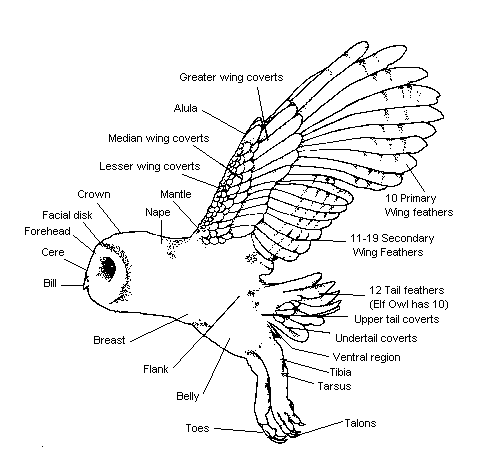
Beaks, Feathers and Flight
Find out about Beaks, Feathers and Flight
Food and Hunting
Find out about Food and Hunting
Owl Hearing
Find out about Owl Hearing
Talons and Feet
Find out about Talas and Feet
Behaviour
Find out about Behaviour
Eyes
Find out about Eyes
Reproduction
Find out about Reproduction
Owls of the World
Find out about Owls of the World
We would like to thank and acknowledge:
-
Deane Lewis “The Owl Pages”.
-
Heimo Mikkola “Owls of the World” A photographic Guide, 2nd edition.
-
Owls of the World (Helm Identification Guides) by Friedhelm Weick & Jan-
Hendrik Becking Claus König, Friedhelm Weick -
The World Owl Trust Mr Tony Warburton MBE
